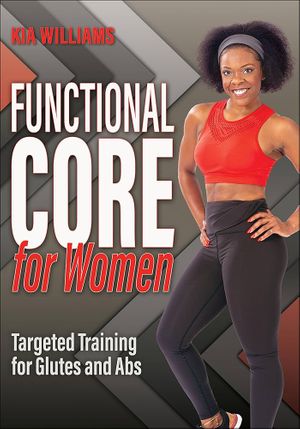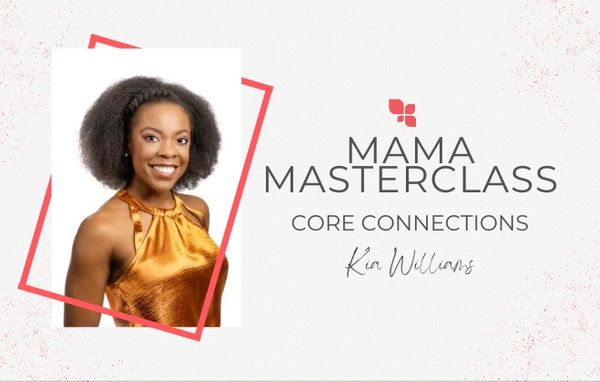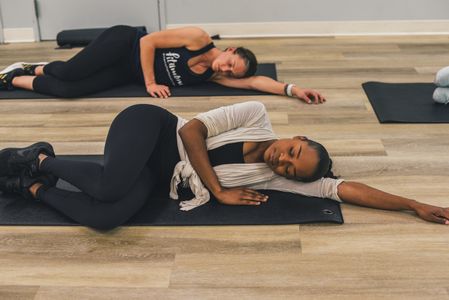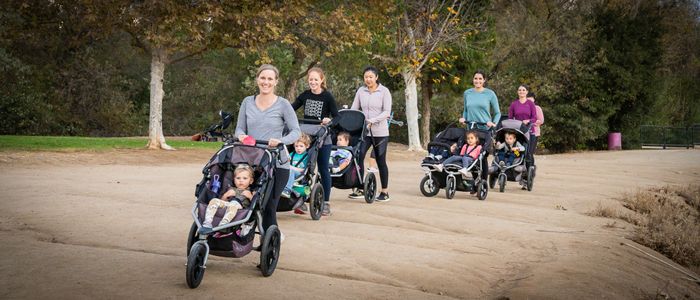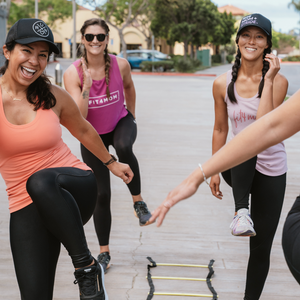
5 Common Myths About Core Training Busted
FIT4MOM x Jessica Maurer x Kia Williams
As women, we often hear phrases like "bikini body" and “tummy tamers” thrown around, diverting our attention from the empowering truth about core strength. It's time to declare this truth boldly—a woman's core is incredible and powerful!
You may be asking: "okay wait, what is the core? Isn't it just your abs?" This is the question we asked Kia Williams, the author of Functional Core for Women: Targeted Training for Glutes and Abs, and her answer may surprise you!
“Consider your core like a corset. It consists of all the muscles of your pelvis, hips, spine, and ribs. It comprises approximately 29 muscles - muscles that make up the front, the back, and the sides of your entire torso. These muscles aid you in stabilization, mobilization, and the type of efficient movement patterns we use when transferring force,” Kia shares in our Mama Masterclass, Core Connections.
We train our core for all the motions in life, such as pushing a child on a swing set, bending down to pick up a car seat, or carrying a wiggling, giggling toddler. We train so we are ready to brace, bend, and shift without injury!
Let's unravel the myths surrounding female core training and pave the way for a more informed, progressive, and body-positive approach to achieving a strong and resilient core.
Here are 5 crucial things every mom should know about training their core.
1. Core Training Goes Beyond Crunches
When we think of core exercises, crunches often come to mind. While crunches can be effective, they only scratch the surface of what core training truly entails! To train your core, you must incorporate various exercises in various body positions. In other words, add movements such as planks, squats, and bridges to engage the entire core and promote functional strength.
“The core supports the integrity of your spine and posture, keeps you balanced, and helps you to prevent injuries, so try training in different positions than just on your back. Try standing, kneeling, and side-lying.
Remember, our daily living patterns do not happen only on the floor. We want to train our core muscles to emulate what we do on a daily basis,” says Kia.
2. Spot Reduction is Not Possible
It's a common misconception that targeting specific abdominal exercises will magically melt away fat in that area. Unfortunately, the truth is that spot reduction is a fitness myth. Fat loss is a systemic process that happens throughout the entire body, not just in isolated regions.
A comprehensive fitness routine that includes cardiovascular exercises, strength training, and a balanced diet is essential for overall body fat reduction. By embracing a holistic approach, women can work towards a strong core and experience improved overall health and well-being.
3. Core Training is Deep
While we typically associate core training with the exterior muscles, there is an entirely different layer of muscles that we should not forget about utilizing.
The inner core is crucial in providing stability and support to our bodies. These muscles are like a canister, working together to maintain proper pressure, posture, and spine protection. These muscles work harmoniously to create a strong and solid foundation for all our movements.
Diaphragm: the top of the canister
Transverse Abdominis: the outside of the canister along with the Outer Core
Multifidus: the back of the canister
Internal Obliques: the sides of the canister
Pelvic Floor: the bottom of the canister
One of the main functions of the inner core is to facilitate breathing. When we inhale, the diaphragm moves down, our ribs move back, our abdominals move out, and the pelvic floor moves down. As we exhale, the reverse happens.
Ensure to incorporate breathwork and pelvic floor exercises to keep these muscles strong and engaged.
“Our inner core muscles are important for maintaining inter-abdominal pressure and helping breathe. Yes, deep diaphragmatic breathing is core training, as is pelvic floor activations,” shares Kia in our Mama Masterclass, Core Connections.
4. Pregnant Women Should Core Train
Maintaining a strong and stable core is essential for pregnant women to support the changing demands of their bodies. Core training can help alleviate discomforts like lower back pain, improve posture, and enhance overall functional strength. A strong core also contributes to better stability and balance during pregnancy.
However, core training will change throughout each trimester. We advise working with a certified prenatal and postnatal fitness trainer to understand your body's capabilities.
To start your journey, check out our Training By Trimester blogs: 1st, 2nd, 3rd, and 4th.
5. Core Training is Not About Aesthetics
Many assume that core training is solely for achieving a visually appealing midsection. While a strong core contributes to a toned appearance, its primary function surpasses aesthetic purposes.
“When training your core, think more functionality. Train beyond the aesthetics. It's not really about the look. It's more about the feeling and the desire to move well and train for longevity. You want to be able to enjoy all activities as you age. So begin training for the benefit of what is beyond the mirror,” Kia shares.
Prioritizing core training is a gift you give not only to yourself but to your entire family. A strong core improves posture, reduces the risk of injury, and enhances overall well-being. Remember, a strong core is not just about your look; it's about feeling strong, capable, and resilient in every aspect of your life.
WANT MORE WORKOUT IDEAS, MAMA?
Check out these blogs to learn more about turning your body into a powerhouse!
READY TO LEARN MORE?
Did you know our Prenatal & Postnatal Fitness Certification includes “Training the Female Core”? This chapter contains:
Exploring the changes that happen to the core throughout pregnancy and how these changes affect the spinal stability, postural alignment, and function of the entire core.
Discussing the differences between inner and outer core muscles.
Diving into the function and structure of the pelvic floor.
Learning how to coach clients through breathing exercises to connect movement, mind, and muscles.
Review the facts (and myths) about DRA and what you can do as a fitness professional.
With the FIT4MOM Prenatal & Postpartum Fitness Certification, you'll gain a profound understanding of the physical and mental changes that occur during pregnancy and postpartum.
Bringing new life into the world is a miraculous and life-altering experience, but it's no secret that pregnancy and postpartum can bring a whirlwind of changes to a woman's body. As a fitness professional or health enthusiast, you have the power to support and empower mothers on their journey to a healthy pregnancy, a smoother birth experience, and a robust postpartum recovery.
Register here to receive more information for training the female client.


